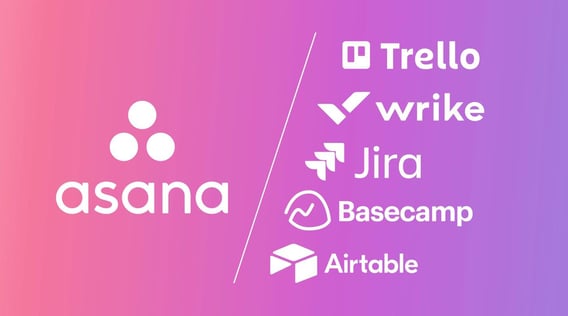Zeroing in on the best Asana alternatives for your team can be tough.
Over the years, Asana has become synonymous with project management and team collaboration. This tool helps many teams stay organized and on track with their tasks and projects.
However, it's not a one-size-fits-all solution. Some teams seek alternatives that better suit their unique workflows and business needs.
And there are so many options on the market to consider.
If you're done with Asana and are seeking the best alternatives to test for your team, don't fret. This post explores the top six Asana alternatives for enhancing your team's productivity and project management capabilities.
Understanding the need for Asana alternatives
Before exploring the alternatives, it’s essential to understand why teams might look for other options. Asana is known for its intuitive user interface and comprehensive features, but it may not fit every team's needs.
Some teams may find Asana too expensive, especially once they scale. Others might need features that Asana doesn’t offer or prefer a different workflow or user experience.
Additionally, while Asana has a free plan, the limitations might not work for larger teams or those needing advanced features.
Teams often seek Asana alternatives that offer more expansive free plans or a different set of premium features that align more closely with their specific needs.
Top 6 Asana alternatives for 2025
The following list provides an overview of top Asana alternatives on the market.
1. Motion: Best for AI-powered project and task management
Motion is an innovative productivity tool designed to help individual users and teams manage their time and tasks more effectively using AI.
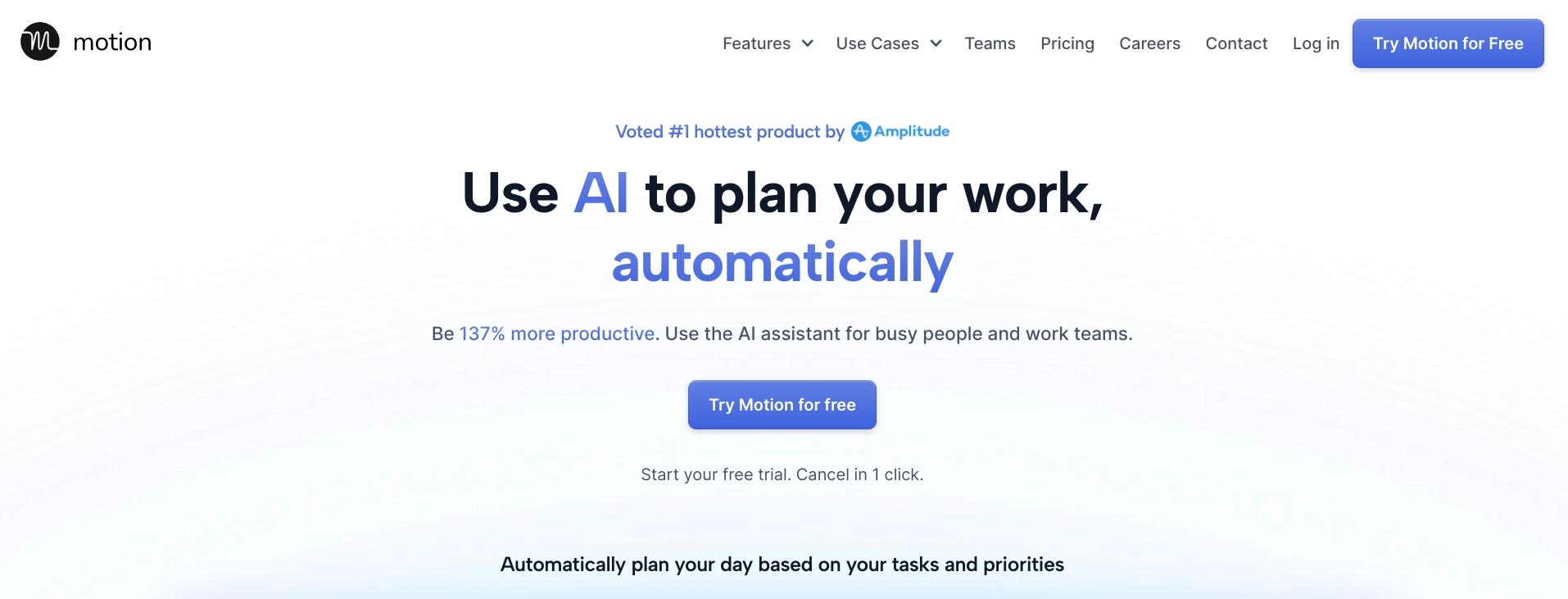
Key features
Key features include intelligent scheduling, task management, and calendar integration.
Motion’s standout feature is its AI-powered scheduler. It automatically organizes and prioritizes tasks based on deadlines, importance, and user preferences, helping teams make the most of their time.
It also offers a unified view of tasks and calendar events, allowing for seamless planning and execution.
Motion also supports collaborative task management, enabling project managers to assign tasks, set due dates, and track progress. Real-time updates ensure that everyone stays informed about changes and deadlines.
Additional features include insights and analytics on time usage and productivity. These insights help users identify and eliminate time-wasting activities.
Pricing (billed annually)
Individual: $19 per month for unlimited tasks and projects
Team: $12 per user per month for unlimited users
Motion offers a 7-day free trial.
Why choose Motion over Asana?
Motion is the top choice for individual users and teams seeking an intelligent scheduling solution that integrates tasks and calendar management with productivity analytics.
Motion's AI scheduler automatically prioritizes and organizes tasks, reducing the manual planning effort and ensuring optimal time usage.
Motion combines task management with calendar events in a single view. This provides a comprehensive overview of schedules and deadlines, which Asana lacks.
Motion also offers detailed insights into how time is spent. This data helps improve productivity by identifying inefficiencies, a feature not as prominent in Asana.
The intuitive and easy-to-use interface is more accessible if you're looking for a straightforward productivity tool.
2. Wrike: Best for a mix of simplicity and power
Wrike is a robust project management and collaboration platform. It's designed to enhance productivity and streamline workflows for teams of all sizes.
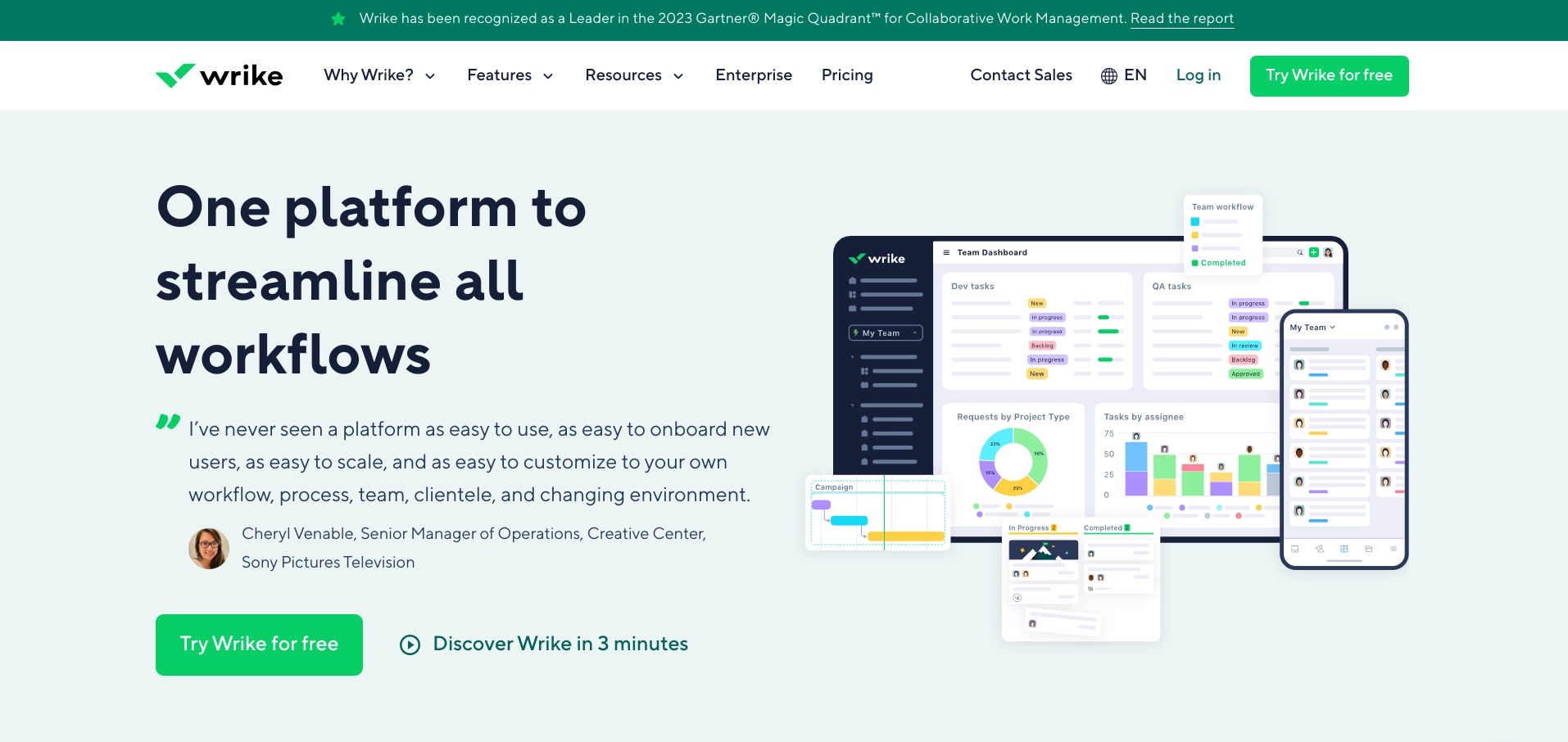
Key features
Wrike’s key features include customizable dashboards, task management with detailed subtasks and dependencies, and real-time collaboration tools such as document sharing and in-task comments.
The dynamic request form feature automatically assigns tasks based on the answers provided, streamlining task delegation. Gantt charts provide a timeline for project planning and tracking, while workload management tools help project managers balance assignments.
Wrike supports extensive integration with popular tools like Salesforce, Microsoft Teams, and Google Drive.
Advanced reporting and analytics enable you to generate detailed insights into project performance and team productivity.
Additionally, Wrike's automation capabilities, including custom workflows and automated approvals, reduce manual effort and increase efficiency.
Pricing (billed annually per user)
Free for unlimited projects, users, tasks, and subtasks
Team: $9.80 per user per month for 2-25 users
Business: $24.80 per user per month for 5-200 users
Enterprise: Contact for pricing for 5 to unlimited users
Pinnacle: Contact for pricing for 5 to unlimited users
A 14-day free trial is available; no credit card required.
Why choose Wrike over Asana?
Wrike and Asana are robust project management tools that cater to different user needs.
Wrike emphasizes collaboration and customization with features like dynamic request forms, which are ideal for diverse team types. Asana is known for its user-friendly interface and comprehensive task management features.
While Asana provides a structured layout for detailed task tracking, Wrike offers tailored solutions for various types of teams.
3. Trello: Best for Kanban boards
Trello is a Kanban-based visual project management tool. It’s highly flexible and can accommodate various project types and team sizes.
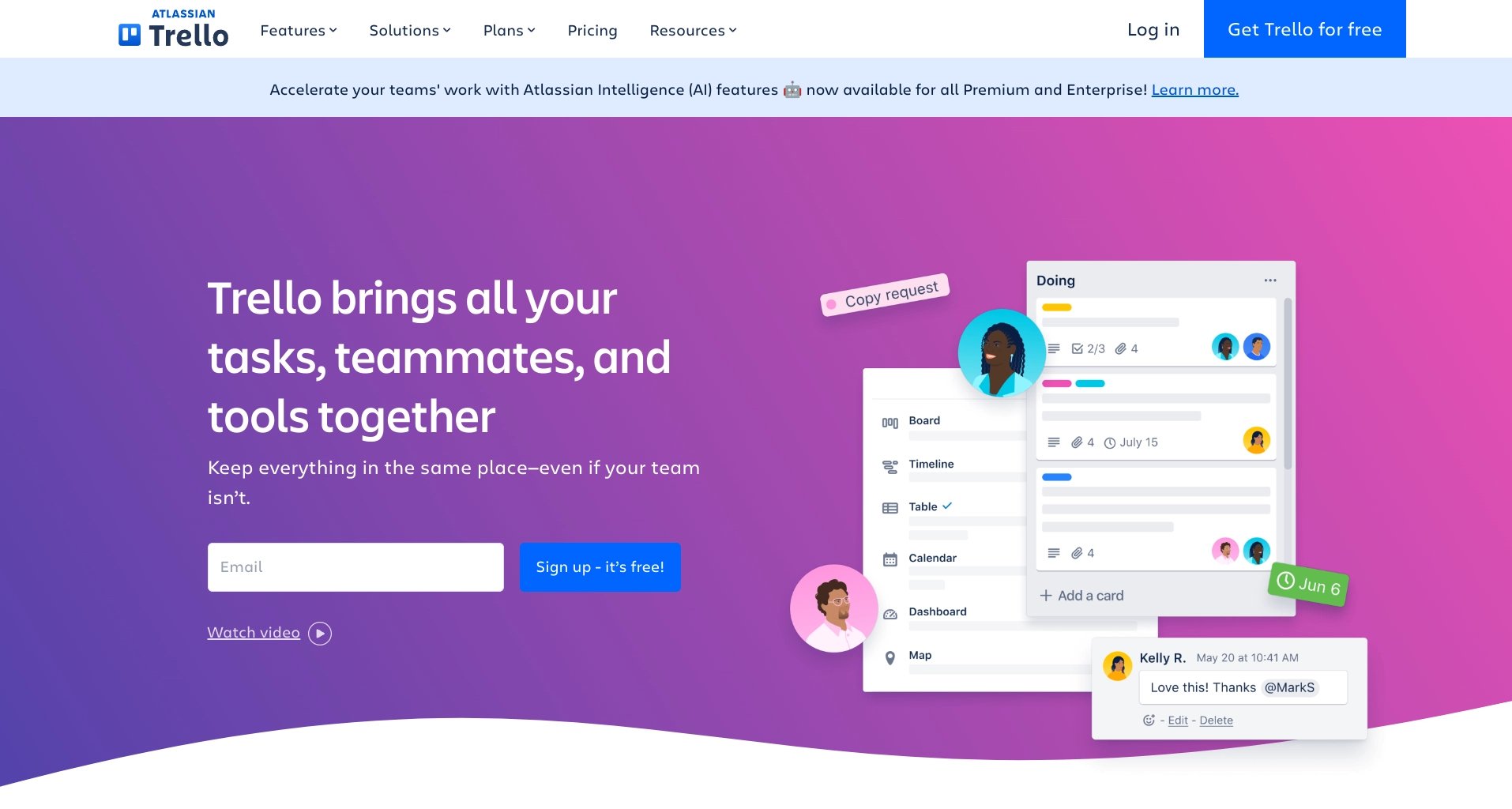
Key features
Key features include customizable boards, lists, and cards for creating and managing projects. The simple, intuitive drag-and-drop user interface makes it easy for new users to get up to speed quickly.
Teams can create cards for tasks, assign them to team members, set deadlines, and track progress in a highly visual way. These task cards also enable you to prioritize and update tasks effortlessly.
Each card contains due dates, attachments, comments, and checklists. This makes it easy to track progress and communicate with team members.
Trello's Butler automation features enable you to create custom rules and triggers to streamline repetitive tasks.
While automation is only available on paid plans, Trello’s free plan is still quite generous, offering unlimited cards and members.
Pricing (billed annually)
Free for unlimited users and cards
Standard: $5 per user per month for unlimited users, cards, and boards
Premium: $10 per user per month for unlimited command runs
Enterprise: $17.50 per user per month for unlimited Workspaces
Trello offers a 14-day free trial of Trello Premium.
Why choose Trello over Asana?
Trello offers fewer advanced task management and collaboration features than Asana. However, its straightforward, streamlined, and flexible approach to task management is ideal for small teams and startups.
Trello is known for its simplicity, ease of use, generous plan offerings, and accessible pricing compared to Asana and many other project management tools.
4. Basecamp: Best for team collaboration and communication
Basecamp is a comprehensive project management and team collaboration tool designed for simplicity and efficiency.
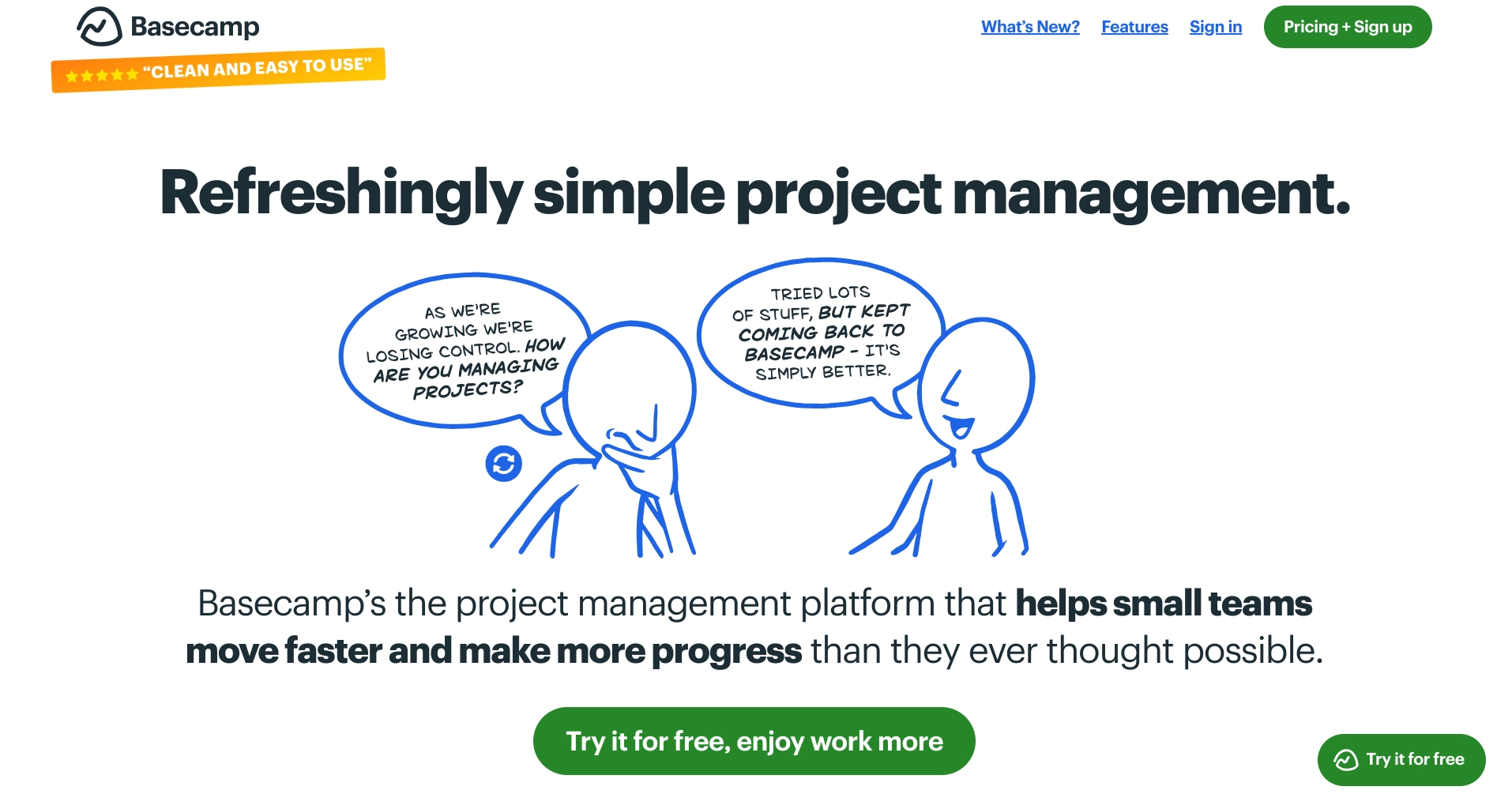
Key features
Key features include to-do lists for task management, message boards for team communication, and schedules for tracking deadlines and milestones.
Basecamp also offers real-time group chat, document and file storage, and automatic check-ins to inform everyone about progress.
The user-friendly interface and centralized project management approach make it easy for teams to organize their work and communicate effectively.
Basecamp's flat pricing model is particularly appealing for larger teams. It offers unlimited projects and users for a single monthly fee.
Pricing
Basecamp Per User: $15 per user per month
Basecamp Pro Unlimited: $299 per month for unlimited users, billed annually
Basecamp offers a 30-day free trial of each plan; no credit card required.
Why choose Basecamp over Asana?
For teams seeking a simple, cost-effective, and integrated project management and communication solution, Basecamp can be a more attractive choice than Asana.
The straightforward design and intuitive interface make it easy for users of all tech skill levels to use effectively.
Message boards and real-time group chat centralize team communication, reducing the need for multiple tools. Automatic check-ins facilitate regular updates and keep everyone aligned without constant meetings.
Finally, the flat pricing model is more economical for larger teams than Asana's per-user pricing.
5. Airtable: Best for app and workflow building
Airtable's versatile project management and database tool combines a spreadsheet's functionality with a database's power.
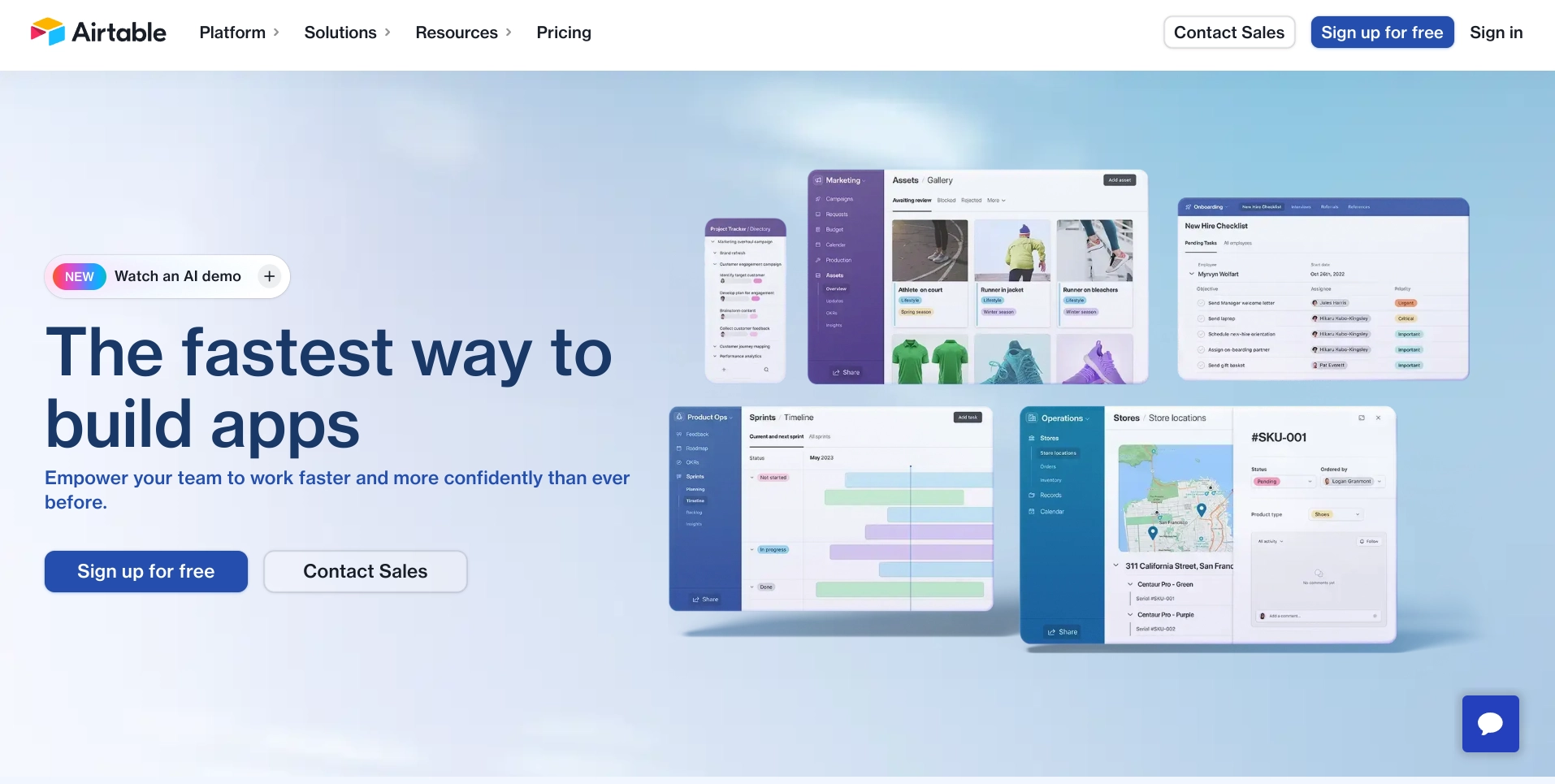
Key features
Airtable's customizable tables can be used to organize and manage various types of information, from project tasks to inventory.
Airtable also offers robust collaboration features, enabling team members to comment on records, assign tasks, and share tables.
Powerful filtering, sorting, and grouping capabilities make manipulating and analyzing data easy. Additionally, Airtable supports automation through its scripting and custom workflow features, which enable you to automate repetitive tasks and processes.
Pricing
Free for unlimited bases
Team: $20 per user per month for unlimited bases and records per base
Business: $45 per user per month for unlimited workspaces
Enterprise: Contact sales
Airtable AI is available as an add-on to all paid plans:
Free plan: For 500 monthly credits per seat
Paid plans: Starting at $6 per user per month for 3,500 monthly credits per seat
A 14-day free trial of the Team plan is available.
Why choose Airtable over Asana?
For teams needing a highly customizable, data-centric, and versatile project management tool with advanced integration and automation capabilities, Airtable can be more suitable than Asana.
Airtable allows users to create highly customizable tables tailored to specific project needs, offering more flexibility than Asana's predefined structure.
The combination of spreadsheet and database features is particularly useful for more complex data-intensive projects. This data requires more advanced management and analysis.
Scripting and custom workflows offer advanced automation capabilities, reducing manual tasks and increasing efficiency. Finally, Airtable's collaboration features — including real-time commenting and task assignments — enhance teamwork and communication.
6. Jira: Best for Agile teams and developers
Jira is a robust project management tool designed primarily for software development teams.
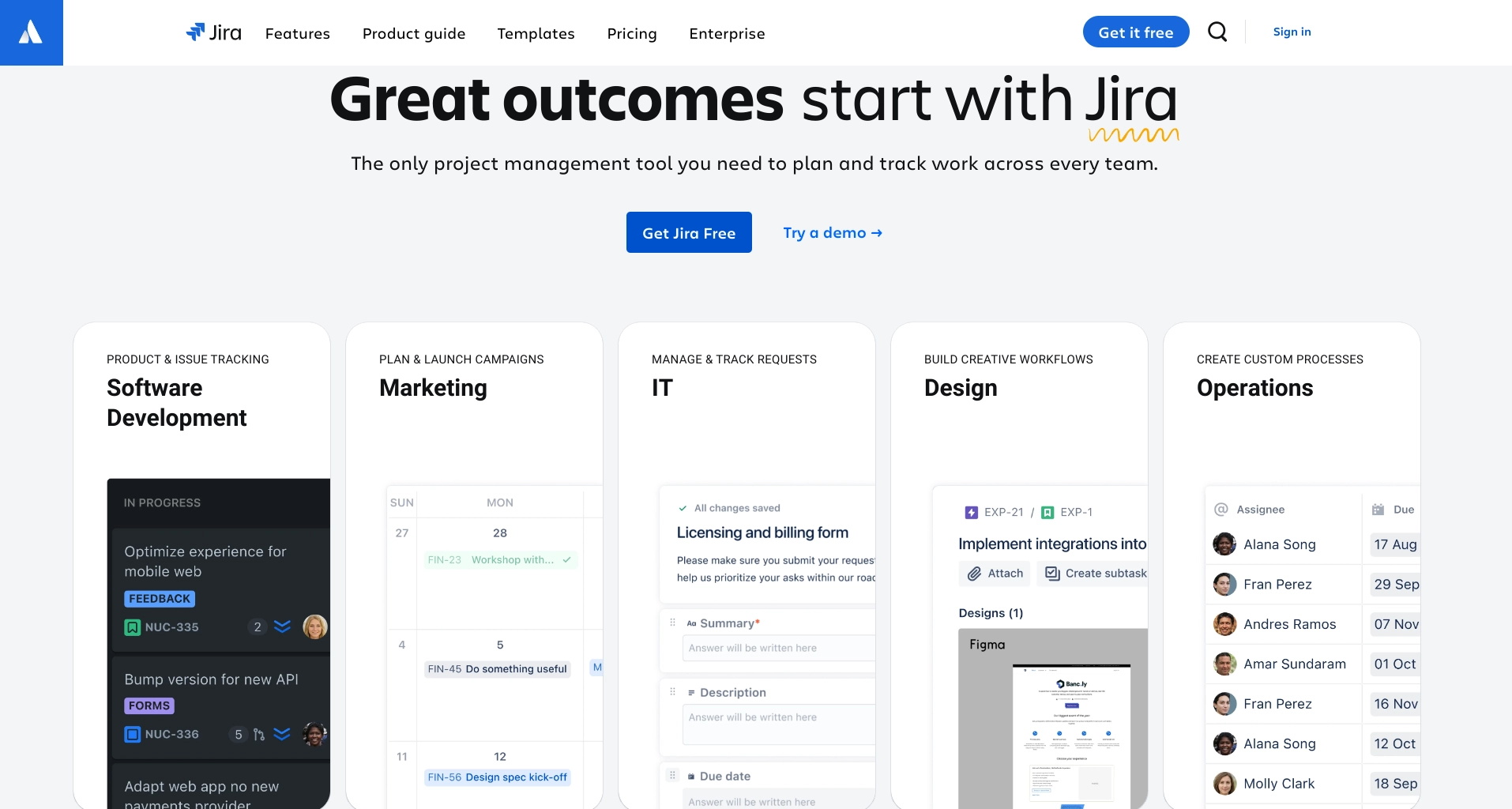
Key features
Jira's key features include customizable workflows, issue and bug tracking, and agile project management capabilities supporting Scrum and Kanban boards.
Jira enables detailed task management through user stories, epics, and sprints. These features facilitate the planning and execution of complex projects.
Jira also offers advanced reporting and analytics, providing project managers insights into team performance and project progress.
Integration with a wide range of development tools enhances its functionality. Its extensive customization options allow teams to tailor Jira to their processes and workflows. Additionally, Jira supports the automation of repetitive tasks, reducing manual effort.
Pricing
Free for up to 10 users
Standard: Tiered pricing, starting at $850 annually for 1-10 users
Premium: Tiered pricing, starting at $1,600 annually for 1-10 users
Enterprise: Contact for pricing
Jira offers a 7-day free trial of the Standard or Premium plan.
Why choose Jira over Asana?
Jira can be more suitable than Asana for software development teams seeking a tool with strong, agile capabilities, detailed task and issue tracking, and seamless integration with development tools.
Its strong support for Scrum and Kanban methodologies makes it ideal for agile teams.
Features like user stories, epics, and sprints offer more granular control over project tasks and workflows than Asana.
Jira's powerful issue and bug-tracking capabilities are essential for efficiently logging, tracking, and resolving issues.
Highly customizable workflows allow teams to design processes that fit their specific project requirements, offering more flexibility than Asana.
Finally, advanced reporting and analytics provide detailed insights into project progress and team performance, aiding in better decision-making.
Key considerations for comparing Asana alternatives
Consider several factors when choosing an Asana alternative to ensure the new tool meets your needs.
User experience
Look for a tool with an intuitive user interface that minimizes the learning curve, making it easy for team members of all skill levels to onboard and use it effectively. Consider how easily users can navigate the tool, access key features, and find relevant information.
Project and task management features
Evaluate the task management features, ensuring they fit your specific project needs. Check for multiple project views to accommodate different workflows and preferences. Finally, assess automation features, which reduce manual effort and increase efficiency.
Team features
Consider the communication and collaboration features offered. Ensure team members can customize notifications to stay informed while avoiding unnecessary updates. For effective project management, look for easy task assignments, progress tracking, and workload visibility features.
Customization
Evaluate the ability to customize workflows to fit your team’s unique processes. Ensure the tool integrates with other tools and platforms your team uses to ensure seamless workflows. Consider how flexible the tool adapts to different project types, industries, and use cases.
Pricing plans
Compare pricing models to determine the most cost-effective option for your team size and budget. Assess available features in free vs. paid plans and whether essential features require a subscription. Ensure scalability as your team grows and your needs expand.
Which is the best Asana alternative for your team?
Finding the right project management tool is essential for maintaining an efficient and collaborative team.
While Asana is a strong contender in the space, the alternatives discussed offer unique features and advantages.
By considering your team's specific needs and carefully evaluating each option, you can choose the best Asana alternative to empower your team and drive success.
Choose which tools on this list you would like to try out. Motion offers a 7-day free trial to test drive its AI capabilities.
Remember that the goal is for your team to manage projects effectively and collaborate seamlessly. With the right solution, you'll be well-equipped to tackle any challenge and achieve your team's objectives.

Tiffany has a BA in Business Management and years of experience writing for SaaS and digital marketing blogs. She bristles at typos, broken links, and 2015 statistics circulated through 2023 content. When not writing, Tiffany's either reading, baking, or mothering her spoiled rescue pittie.
